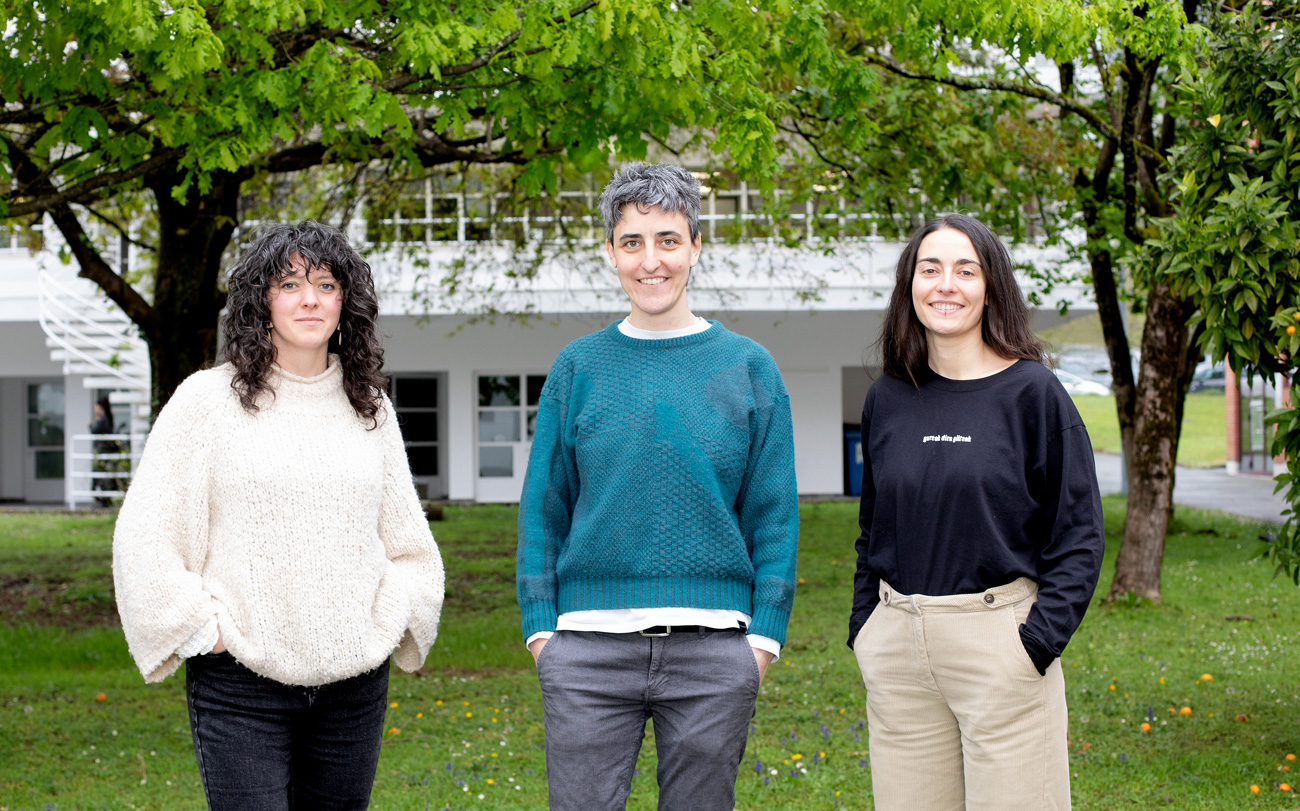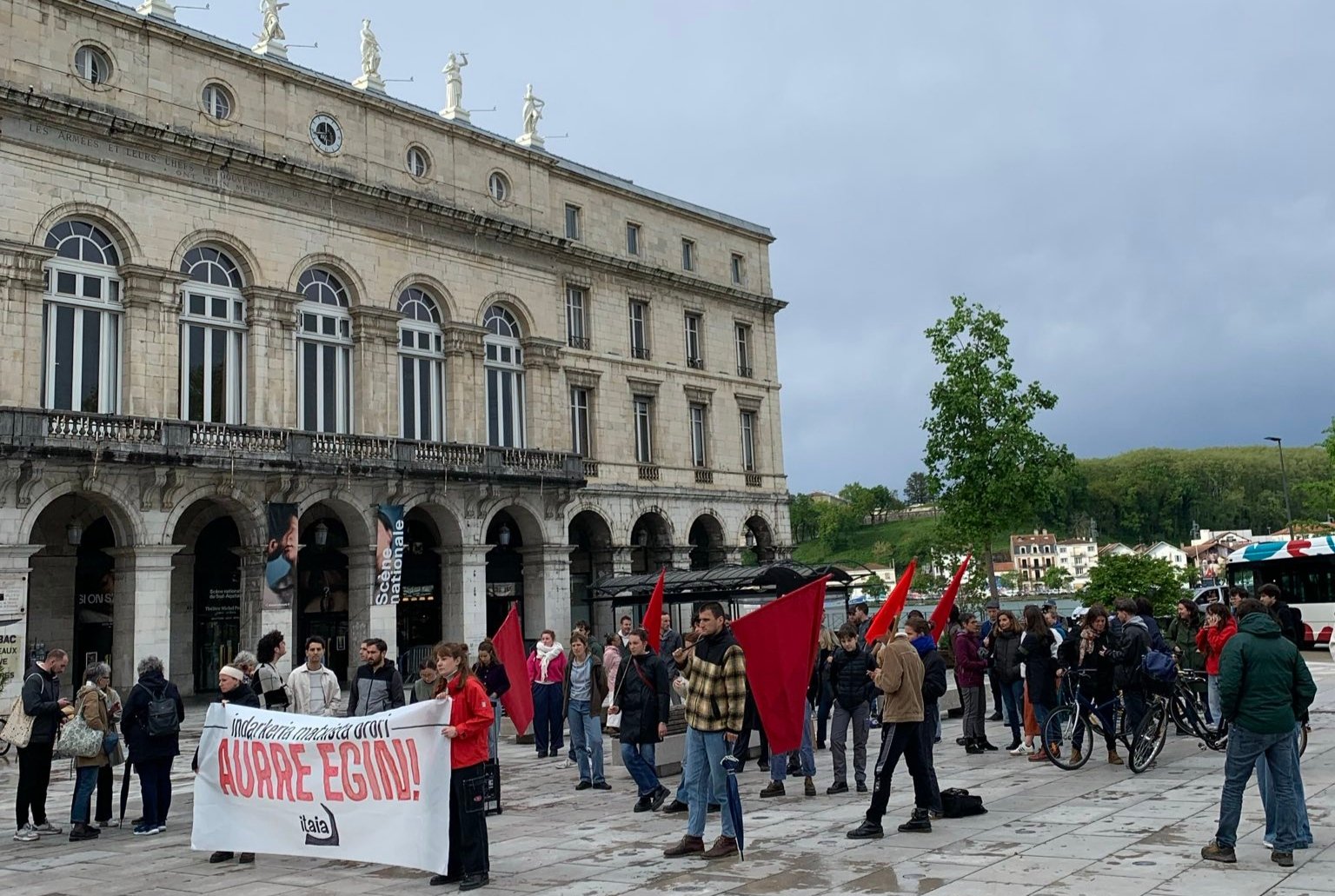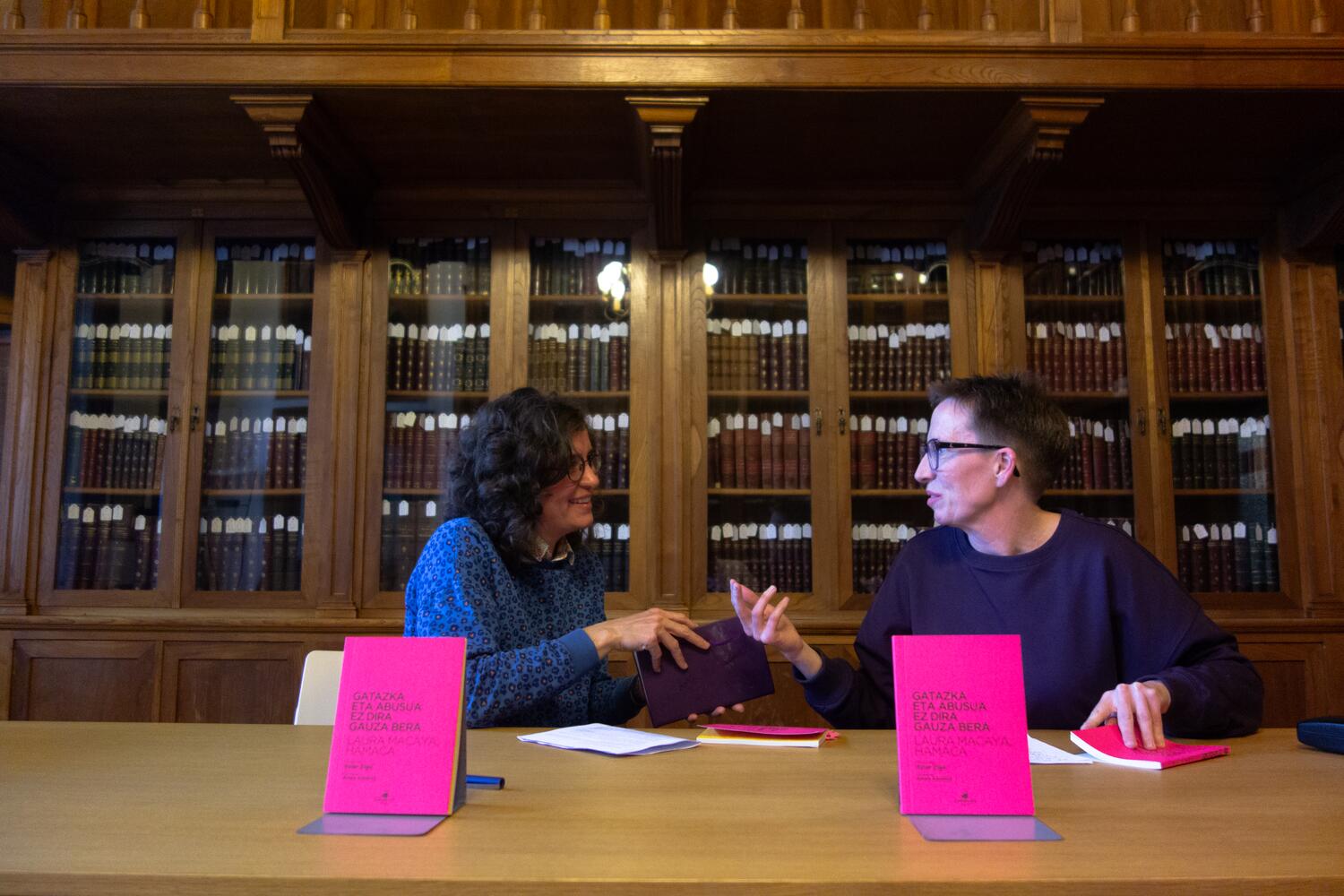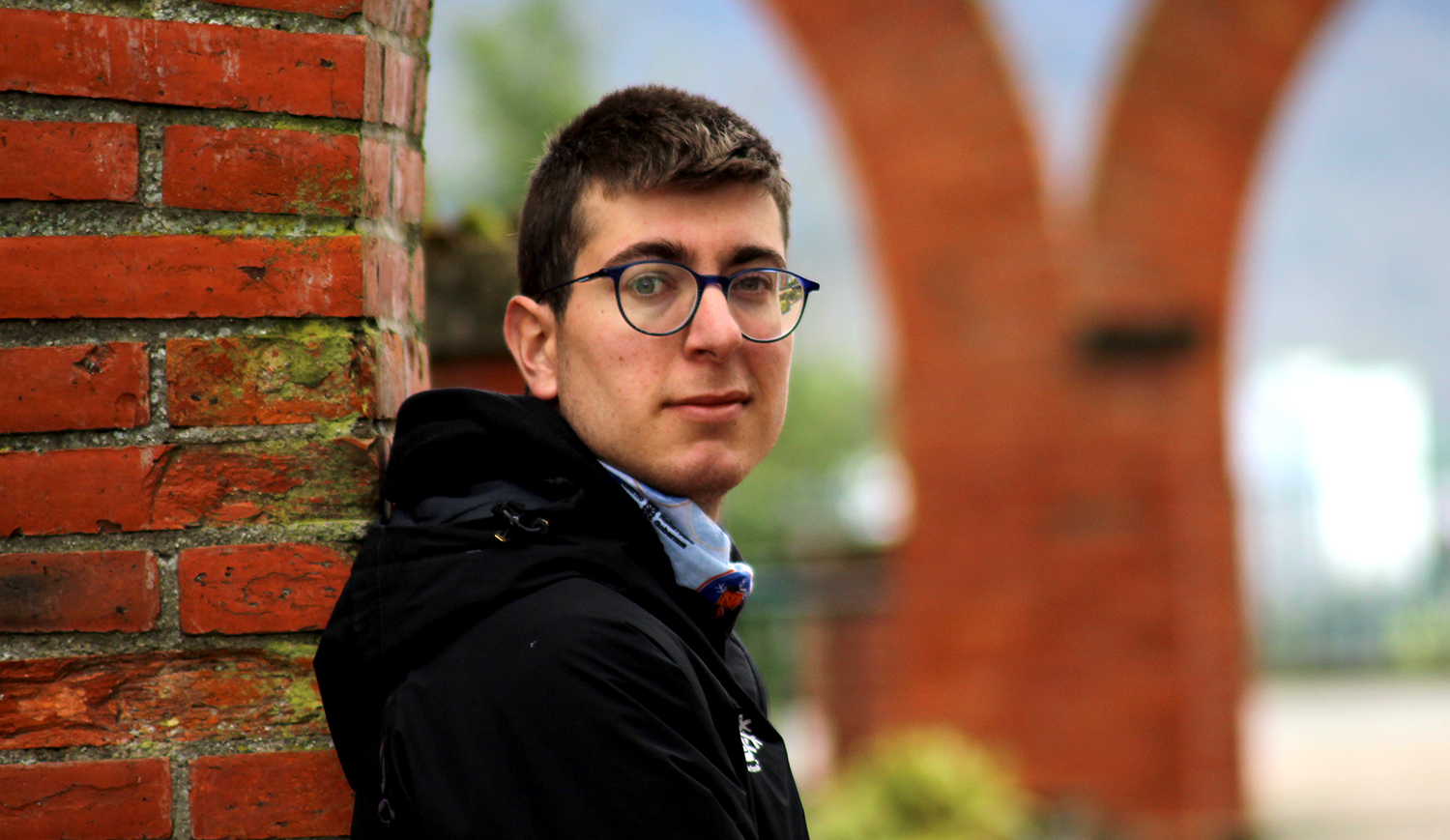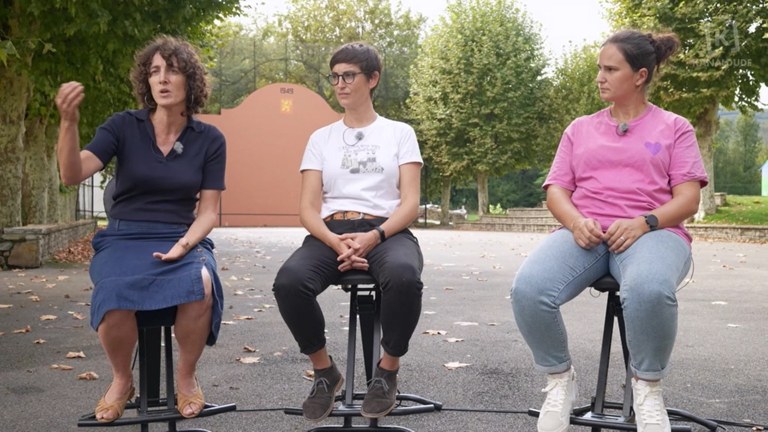"You'll never have the comfort of our silence again."
- Last August, images showing the indignation of Mexican women were disseminated around the world. The indignation was caused by the Government ' s contradictory response to a minor raped by four policemen, who have refused to participate in the aggression. However, rabies has not fallen, and responding to bullying in educational centers, the feminist movement has held several faculties and have been out of class for almost a month. The protest will not end until the aggressors are expelled from the centers of the Ertzaintza.
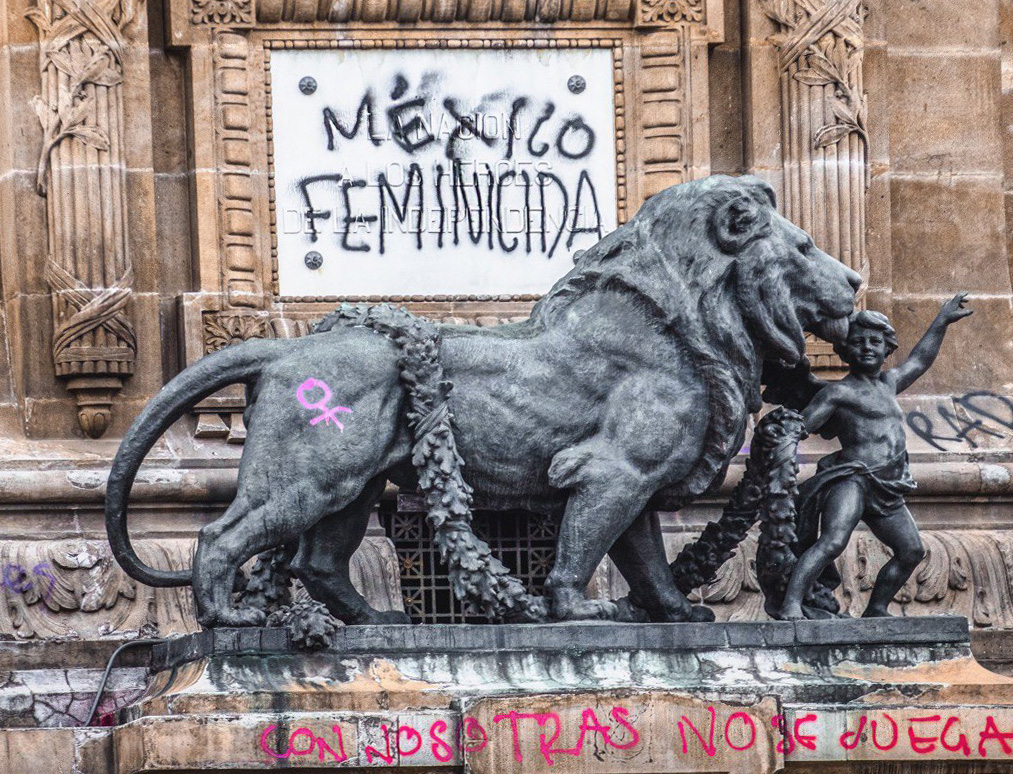
Feminicide is not a new problem in Mexico. Since the 1990s, the state of Chihuahua attracted attention; in Ciudad Juárez there began to be wild cases of violence against women: raped, drowned, disappeared... At that time, the news of the murdered women spread as an isolated fact to other parts of the country. The theory of American journalist Charles Bowden has been very successful: this border city has been used as a laboratory for the experimentation of capitalism. Thus, the problem has spread throughout the country. The result, the precariousness of millions of Mexican women and the persecution they suffer every day in many areas of life.
Ten women are killed every day in Mexico, one of the most dangerous countries to become women in the world. According to official data from the National Security System, between January and September 2019, at least 2,833 women were killed at the hands of their partners. But just as a femicide, 726 of them are being investigated.

Most of the victims have suffered brutal violence, and their bodies have been thrown on roads, windbikes and city parks. If that were not enough, it is common for the aggressors to be people related to the victims: relatives, couples, friends or profesores.Lo
before it was not enough for the Government to want to put an end to the situation. Most women know very well that if they survive an aggression and decide to denounce the aggressor—no matter which institution they are heading for—the conditions of the aggression are most likely to be questioned and then blamed. The mothers of the missing women, who have asked for help in locating their daughters, have received several excuses to lengthen the search process. And by chance, if you get the research started, it's often late, because it starts a few months after it's gone, and it's often impossible to clarify anything.
You can't be safe in college either.
All violence against women is not limited to the most dangerous states in which there are drug trafficking, corrupt police and crime. In the past, Mexico City was considered a security bubble amid the chaos that has spread throughout the country. And in the center of the city, the prestigious National Autonomous University UNAM of Mexico, the largest in Mexico, with 400,000 students, and known for being one of the places where the Police is forbidden to enter, has not been a pound either. Violence in the city has grown so much that the UNAM security bubble has also broken.
On May 3, 2017, the corpse of Lesvy Osorio, a 22-year-old student, was tied to a telephone booth on the campus. Since then, a space that was taken for granted became a danger and a threat. In April 2018, Mariela Vanessa, a student from the School of Philosophy and Letters, disappeared, and no one knows where she is. In both cases, they questioned the word of their mothers. Lesvy's mother was told that her daughter was using drugs. To Mariela Vanessa's mother, the chiefs of the faculty refused her help, and they didn't want to provide information about the research.
.jpg)
There is also the case of Graciela and her daughter. They were teachers and students, respectively, at the School of Architecture, and they were both killed at home. The Government had no hurry to intervene. Miranda Mendoza Flores was also kidnapped and killed. The body of the UNAM student was found in one of the most dangerous areas in Mexico City. His colleagues demonstrated on the university's main campus to report the event and the security forces sent by UNAM repressed the protest harshly.
Up
In this context, from August onwards the anger and bravery spread among the groups of women. Tired of the situation suffered by women in Mexico in their day to day and tired of demanding justice from institutions and the State that do not show concerns, they began to organize and take care of each other. In particular, college students, as well as women from other places, began to create personal care and defense networks to deal with the assaults. Their demonstrations ceased to be peaceful – a special situation, given the high degree of repression in Mexico. Concrete objectives are also set: to create places where there is no persecution, rape or coverages.
.jpg)
This flourishing was affected by a rape in August in which four policemen were found to act against a minor. Thousands of women took to the streets. With the motto "we were all", they became unrecognizable, the government of Mexico City could not find "leaders or organizers" and could not attribute to anyone the damage caused to the most important monuments.
Returning to university, it is no coincidence that it reflected the indignation and boredom of recent months: among the universities with records, UNAM has suffered the most attacks. This prestigious university contains alarming data. They estimate that in six out of ten assaults investigated there is one professor involved. In recent years, moreover, cases have multiplied: Between 2012 and 2016, 36 cases were recorded, and between 2017 and 2018, 107. All of this, obviously, without taking into account that with the unreported cases the figure would be much higher.
University occupation
Thus, due to the level of harassment within the university, several women and feminist groups organized a non-mixed meeting in October. The protest, agreed there, has been joined by 11 of the 39 UNAM headquarters. The UNAM Baccalaureate Centres have also been incorporated, so young people between the ages of 15 and 18 are added to university women.
.jpg)
The protest originates from a campus in the state of Mexico. It is the entity that surrounds Mexico City and, therefore, the periphery of the city. This region has been popularized by the impunity for violence against women that has surpassed that of Ciudad Juárez. The students of this center demanded that account be taken of the 77 accusations accumulated against teachers and students in the area. In a short time, the urge to do something has spread, and the undefined strikes have erupted, at least until the time of firing cover-up managers, gender-blind lawyers and indifferent workers.
The Faculty of Philosophy and Literature has been occupied for a month and the women there are willing not to despair until they get what they want. Since 5 November, they have been organized with members of other faculties to discuss the demands and strategies and to make visible the seriousness of the problem. However, since the beginning of the movement, there has been continuous persecution by students from other faculties, including physical aggressions and threats of rape. They have even been thrown on top of the institution. They have often denounced that during the night there are strange incidents such as unjustified fire alarms, visits and shouting of unknown, unknown people photographing, etc.
No conversation
At the last meeting with the Faculty Director, they have made it clear that the meeting is not an interview: it comes to hear it, and in no case to negotiate.
.jpg)
To improve the university situation, proposals have been elaborated such as the dismissal of several people or changes in the curricula, to introduce subjects with a feminist perspective. Likewise, they have proposed the creation of autonomous and non-mixed spaces for political organization within the university, that are not persecuted by what is being done, and that they keep the painted and murals they have done. The principal of the faculty has been willing to accept some of these requests, which has not satisfied the movement. It seems that the occupation is going to go ahead, even though the mobilized lose a semester.
The way of organizing goes beyond a structure. It can be said that it is more intuitive, that it does not follow any concrete protocol and that it arises from the action of doing. In this regard, the authorities have more difficulty in knowing what the mobilized will do and what not, they are more difficult to control.
What the walls denounce
Women older than those mobilized have put on the table: "Why hasn't the work been done so far?" The problem has always been there, and we all know that, but what has changed between current actions and the invisibility of the past?" One of them replied: ignorance of the scale of the problem. “In previous years we knew this was happening, but we have never had a full picture of the situation. In this sense, the expression and description of the problem have represented a significant change: what was considered an individual problem has shown a political character.”
.jpg)
Abort your college pride. The walls can be cleaned, the dead won't be returned. We're afraid, because we're not afraid. They will never again enjoy the comfort of our silence. Now they read feminism, but they're the same as always. Neither the land nor we are the territory of conquest and the UNAM supports you, we denounce you... with slogans like them express their position the women who participate in the mobilizations.
Thus, the walls of the largest Latin American university indicate what managers have just silenced. Practices such as the clothesline, which have been used to denounce the aggressors with high-visibility walls, have become necessary to explain the magnitude of the problem and have turned what they kept secret for years into a communicative message. This has served to restore the comfort that the silence that dominated the prestigious university has caused the aggressor. Thus, women's groups use on a daily basis painted, banners, etc. to denounce and fight the persecution that the university removes and bleaches every day.
.jpg)
What is happening at UNAM reflects what is happening in Mexico: here the violence of the male chauvinist has invaded us, and here the dead, disappeared, raped and persecuted have worse value than the important monuments. In this regard, Day Against Male Violence has shown that it is in the interests of the institutions and the State to eliminate any glimmer of what is happening, and it has highlighted its priorities. After intervening once again in the demonstration on the historical monuments of the city on that day, the former head of the Government of Mexico City, Marcelo Ebrard, congratulated the current President of the Government, Claudia Sheinbaum, who was immaculate in a few hours for the effective cleaning and restoration work. Meanwhile, 14 more women were killed that day.
Fraternity yes, not fear
Given the indifference of the Government and the increased police presence on the street to improve citizen security, other ways of dealing with the problem of persecution are being worked out, struggles very different from the classical takeover. The struggle of all those who are not students is in favor of life. It goes beyond the limits of student organizations. The struggle of women is a matter of everyday life, it covers many areas of existence, and therein lies its focus of force.
.jpg)
An adult woman screamed outraged at the demonstration on 25 November: “They kill our daughters inside and outside school. Enough, colleagues. If you see that we're angry, how on earth am I not going to be angry? I want to burn it all! My daughter was killed!” Rage and boredom are feelings that all Mexican women experience. After losing our daughters, mothers, friends and sisters, what do we care about losing fear?
* Translation: Lukas Barandiaran and Irati Salsamendi Lozano
Many Basque feminists have been disappointed to learn that writer Chimamanda Ngozi Adichie has externalized pregnancy, meaning that a surrogate has fertilized her baby for money.Adichie is the author of the essay We should all be feminists, among others. They have ignored the... [+]
Indartsua, irribarretsua eta oso langilea. Helburu pila bat ditu esku artean, eta ideia bat okurritzen zaionean buru-belarri aritzen da horretan. Horiek dira Ainhoa Jungitu (Urduña, Bizkaia, 1998) deskribatzen duten zenbait ezaugarri. 2023an esklerosi anizkoitza... [+]
Gozamen aparta bezain deskribatzeko zaila dakar, norbaiten hitzak irakurri edo entzun ostean, zera pentsatzeak: “Horixe zen neu aurreko hartan azaltzen saiatu nintzena!”. Idazlea eta itzultzailea da María Reimóndez, eta galegoz aritzen da, hizkuntza... [+]
Orain arte desgaituak ez diren pertsonekin lehiatu da Uharteko Ipar Eski Taldeko Eneko Leyun eskiatzailea (Iruñea, 1998). 2024-2025 denboraldian, lehenengo aldiz parte hartu du Adimen Urritasuna duten Pertsonentzako Iraupeneko Eskiko Espainiako Txapelketan. Urrezko... [+]
Joan den urte hondarrean atera da L'affaire Ange Soleil, le dépeceur d'Aubervilliers (Ange Soleil afera, Aubervilliers-ko puskatzailea) eleberria, Christelle Lozère-k idatzia. Lozère da artearen historiako irakasle bakarra Antilletako... [+]
Endometriosiaren Nazioarteko Eguna izan zen, martxoak 14a. AINTZANE CUADRA MARIGORTAri (Amurrio, 1995) gaixotasun hori diagnostikatu zioten urtarrilean, lehen sintomak duela lau urte nabaritzen hasi zen arren. Gaitz horri ikusgarritasuna ematearen beharraz mintzatu da.
Duela aste batzuk, gurean egon ziren El Salvadorko eta Kanarietako emakumeen eskubideen aldeko hainbat aktibista. Sexu- eta ugalketa-eskubideez eta eskubide horiek urratzeak emakumeengan dituen ondorioez aritu gara; hala nola El Salvadorren berezko abortuak izanda homizidio... [+]
Zuberoako ohiturei buruzko bi liburu ditut gogoan. Batek XX. mendean aritu izan diren 180 dantzari eta soinulari aipatzen ditu. Haien artean, emakumezkorik ez da agertzen. Besteak, pastoralei egiten die errepasoa eta hor emakumeak aipatu aipatzen dira, baina omisio esanguratsuak... [+]
1984an ‘Bizitza Nola Badoan’ lehen poema liburua (Maiatz) argitaratu zuenetik hainbat poema-liburu, narrazio eta eleberri argitaratu ditu Itxaro Borda idazleak. 2024an argitaratu zuen azken lana, ‘Itzalen tektonika’ (SUSA), eta egunero zutabea idazten du... [+]











